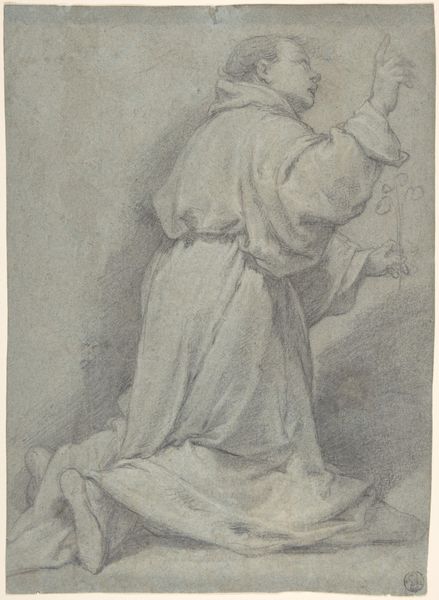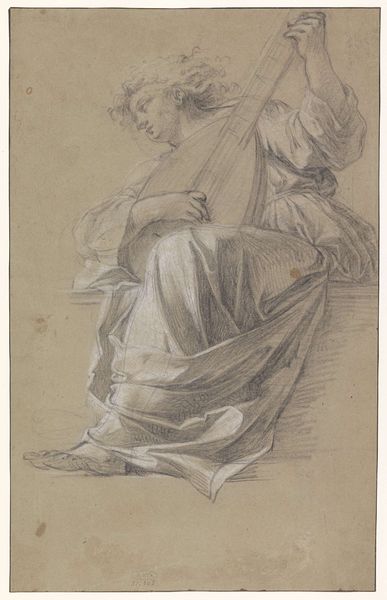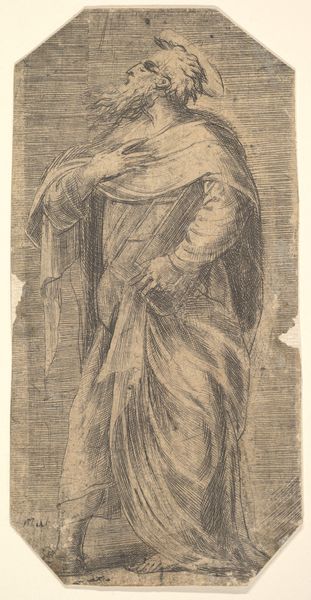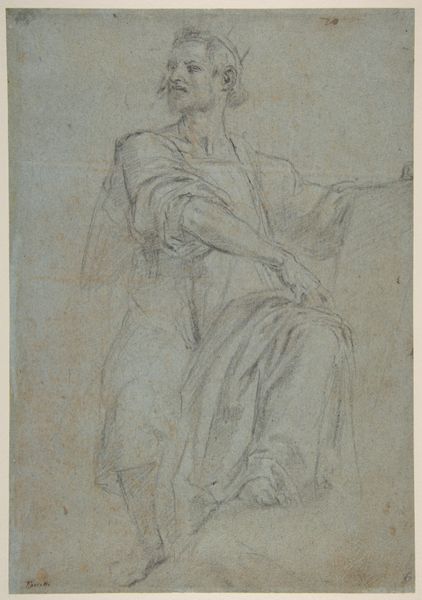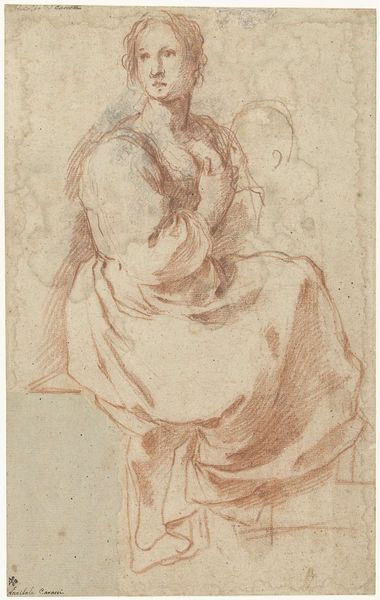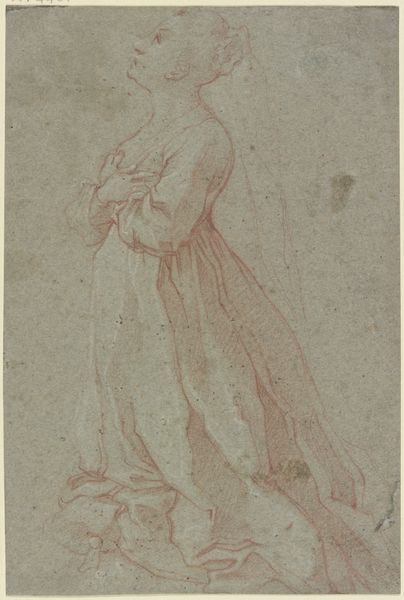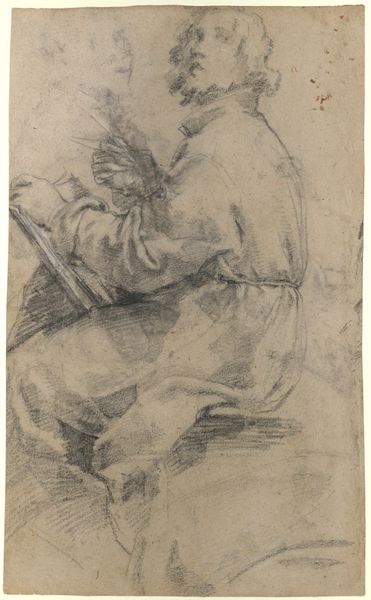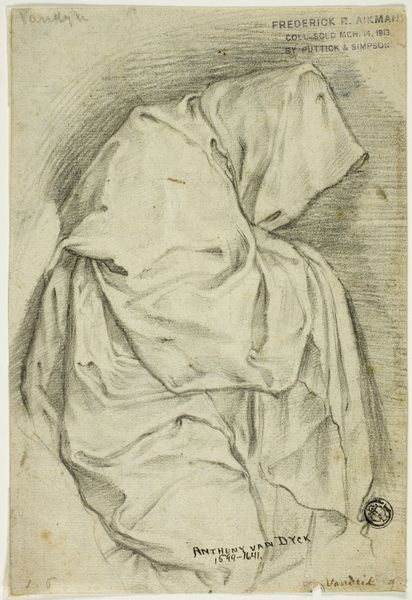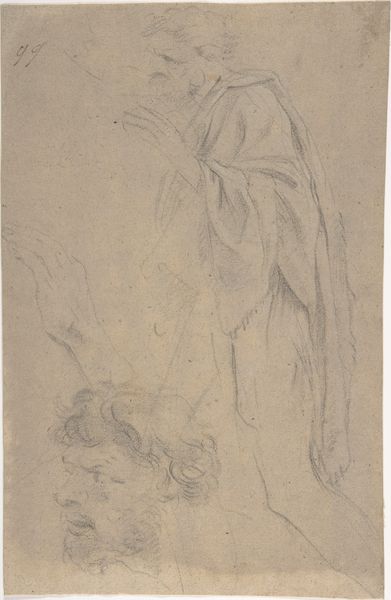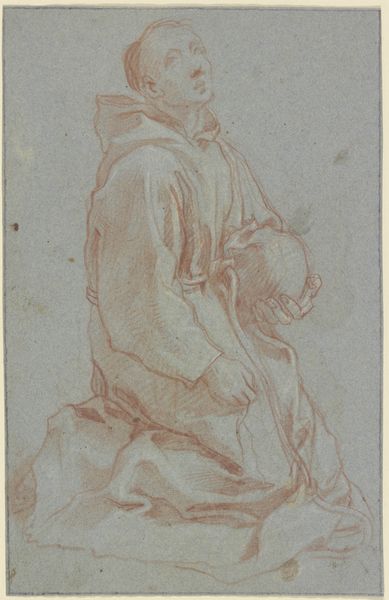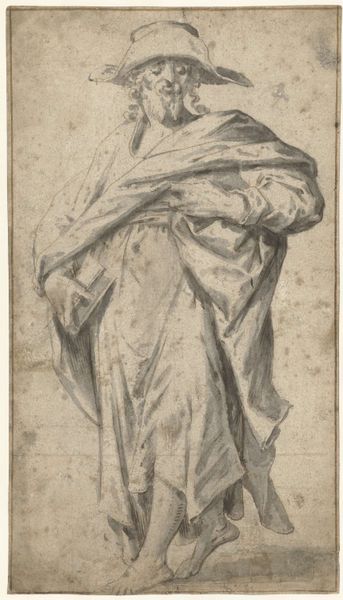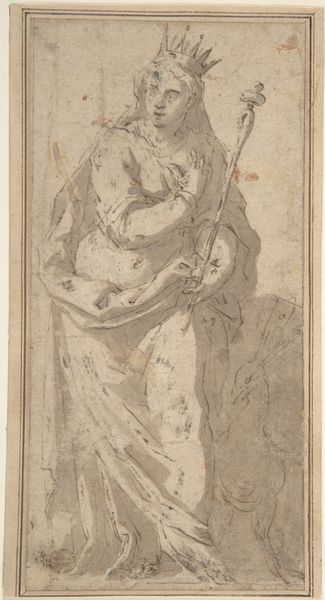
Seated Draped Male Figure (recto); Rough Studies of Putti (verso) 1582 - 1647
0:00
0:00
drawing, print, paper, pencil
#
portrait
#
drawing
# print
#
mannerism
#
figuration
#
paper
#
pencil drawing
#
pencil
#
men
#
history-painting
Dimensions: 16-5/8 x 10-13/16 in. (42.3 x 27.5 cm)
Copyright: Public Domain
Curator: At first glance, the graphite seems to barely graze the paper, but somehow there's weight there. It almost feels like seeing a half-remembered dream, or a vision flickering in the periphery. Editor: I am glad you pointed that out. We are currently observing "Seated Draped Male Figure (recto); Rough Studies of Putti (verso)", a drawing by Giovanni Lanfranco created sometime between 1582 and 1647. It is done in pencil on paper. You see, the draped figure is an enduring symbol of authority, wisdom, and even divine presence in Western art. Curator: Authority...yes. He has this almost nonchalant pose, a seated figure making a grand gesture with his hand, like a conductor leading an orchestra you can't quite hear. Except this orchestra is internal, playing in the chambers of his mind. I feel a certain confidence there. I’m wondering, though, about the rough studies mentioned in the title. Editor: Well, Lanfranco used the back of the paper to sketch figures of putti or cherubic children, a symbol frequently found in both religious and secular art of the time. Often, putti represented divine love, messengers from a higher power. Curator: Divine love scribbled on the back! It feels so delightfully human, you know? I keep thinking about what these rough studies mean about the front figure...are we looking at some historical or religious figure being weighed against innocence and love? He isn’t, by chance, holding two fingers up...like, could this allude to a duality, the divine and the mortal, fighting for space within one soul? Editor: The beauty of the iconography lies in its flexibility of interpretation. And by the way, yes, in the Christian tradition, that two-fingered gesture is often symbolic of Christ's dual nature, both human and divine. Lanfranco seems to use classicism conventions here, mixing sacred symbolism with, as you observed, human vulnerability. Curator: Right, that vulnerability, the roughness of the sketch itself only reinforces this! Editor: Looking at the artwork this way can unlock so many interpretations of the same visual language that informed the artist centuries ago. Curator: Absolutely, to tap into his intentions... and suddenly also reveal so much about ourselves, which is always kind of spooky and thrilling. Thanks for unlocking the code, as usual. Editor: It was my pleasure! Every symbol has its echo through time.
Comments
No comments
Be the first to comment and join the conversation on the ultimate creative platform.

